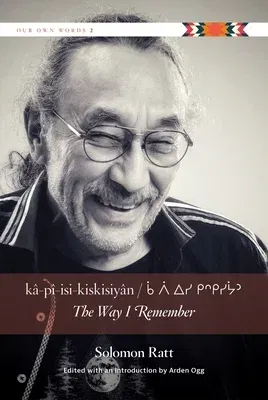A residential school survivor finds his way back to his language and
culture through his family's traditional stories.
When reflecting on forces that have shaped his life, Solomon Ratt says
his education was interrupted by his schooling. Torn from his family at
the age of six, Ratt was placed into the residential school system--a
harsh, institutional world, operated in a language he could not yet
understand, far from the love and comfort of home and family. In
kâ-pî-isi-kiskisiyân / The Way I Remember, Ratt reflects on these
memories and the life-long challenges he endured through his telling of
âcimisowin--autobiographical stories--and also traditional tales.
Written over the course of several decades, Ratt describes his life
before, during, and after residential school. In many ways, these
stories reflect the experience of thousands of other Indigenous children
across Canada, but Ratt's stories also stand apart in a significant way:
he managed to retain his mother language of Cree by returning home to
his parents each summer despite the destruction wrought by colonialism.
Ratt then shifts from the âcimisowina (personal, autobiographical
stories) to âcathôhkîwina, (sacred stories) the more formal and
commonly recognized style of traditional Cree literature, to illustrate
how, in a world uninterrupted by colonialism and its agenda of genocide,
these traditional stories would have formed the winter curriculum of a
Cree child's education.
Presented in Cree Th-dialect Standard Roman Orthography, syllabics, and
English, Ratt's reminiscences of residential school escapades almost
always end with a close call and a smile. Even when his memories are
dark, Ratt's particularly Cree sense of humour shines, making
kâ-pî-isi-kiskisiyân /The Way I Remember an important and unique
memoir that emphasizes and celebrates Solomon Ratt's perseverance and
life after residential school.

